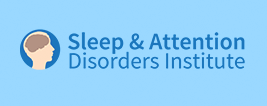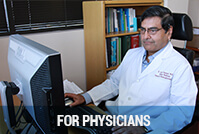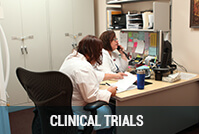Home Sleep Apnea Testing (HSAT) is Often Inconclusive
Home Sleep Apnea Testing (HSAT) is Often Inconclusive
Home Sleep Apnea Testing (HSAT) was designed to confirm (not to exclude) obstructive sleep apnea, in patients with high pre-test probability of moderate to severe obstructive sleep apnea, without other disorders including:
1. Significant heart or lung disorders
2. Sleep disorders, including insomnia, abnormal behavior in sleep, movement disorders in sleep including but not limited to periodic limb movement disorder, circadian rhythm sleep disorders, narcolepsy/ idiopathic hypersomnia, central sleep apnea
3. Neuromuscular disorders
4. Dependence on opioid medicines
5. Cognitive impairment
In such a selected series of patients, HSAT is conclusive 70% of the time. Since there are not technologists monitoring or fixing sensors that slip or malfunction, sometimes the data is unsatisfactory. HSAT monitors only breathing, not sleep. So, we do not really know when the patient is sleeping and when awake. Therefore, if the patient is awake a significant amount of time, HSAT misses the sleep apnea. The recording devices and sensors are not of the same quality and quantity as the devices used in the sleep center. Therefore, there is an inherent false negative (and false positive) rate on the devices.
However, many insurance companies require HSAT as the first step in almost all patients. They require this regardless of pre-test probability or presence of many of the other disorders. Simple mathematical calculation shows that this requirement changes the inconclusive HSAT rate from 30% to 50%.
Insurance companies requiring HSAT as the first step in the diagnosis of obstructive sleep apnea
Most (but not all) insurance companies now require that the first step in the diagnosis of sleep apnea be an HSAT. Most insurance companies that require HSAT allow patients with certain conditions to start with testing in the sleep center (polysomnography or PSG, which is the ideal sleep test). Different insurance companies have different requirements for which patients can avoid doing the HSAT first. All other patients with these insurances must have HSAT first. If HSAT is positive for sleep apnea, they may be treated. If HSAT is inconclusive, then the insurance company allows testing in the sleep center (PSG) as the next step.
There are even insurance companies that require two inconclusive HSATs before allowing an in-center PSG. Patients with these insurances may require three tests before a definite diagnosis. That is definitely an inconvenience. Sometimes, patients lose patience and drop out along the way. When this happens, the insurance company saves money, as it does not have to spend money on diagnosis or treatment. The insurance company wins, the patient loses!
Now, there are sleep centers that proudly proclaim that they are so good that all their sleep testing is positive for sleep apnea. Thus, all (or almost all) of the patients they test end up being treated for sleep apnea. In such a center, the majority of HSATs may also be positive, and patients going to such centers may not have as many diagnostic tests.
Then there are sleep centers that have figured out what to say to each insurance company to avoid the HSAT and go directly to the in-center PSG. This is not hard to figure out. Some sleep centers will say what they have to in order to go directly to the in-center PSG. In other words, they will claim symptoms that the patient does not have. For example, we saw a patient who had an in-center PSG at a nearby sleep center. The patient was dissatisfied and the test results were internally contradictory and seemed shoddy. We wanted to repeat the testing. The insurance company agreed the other test results were shoddy, but asked us to do an HSAT. The insurance company stated it had allowed the other center to do an in-center PSG as the other center claimed the patient had cognitive impairment! Since we were not willing to lie and claim the patient had cognitive impairment (he did not), the insurance company insisted we do an initial HSAT. Patients going to such centers may also not have as many diagnostic tests.
If patients go to a sleep disorders center that is reputable, honest, and is accredited by the American Academy of Sleep Medicine, they will get better quality of care. They are also more likely to avoid unnecessary care. However, they may then need two to three tests to diagnose sleep apnea!
(If you are in the Medicare age group, keep in mind that Medicare does not require HSAT as a first step, but most Medicare Advantage plans do. This may be a good reason to prefer Medicare over a Medicare Advantage plan).










